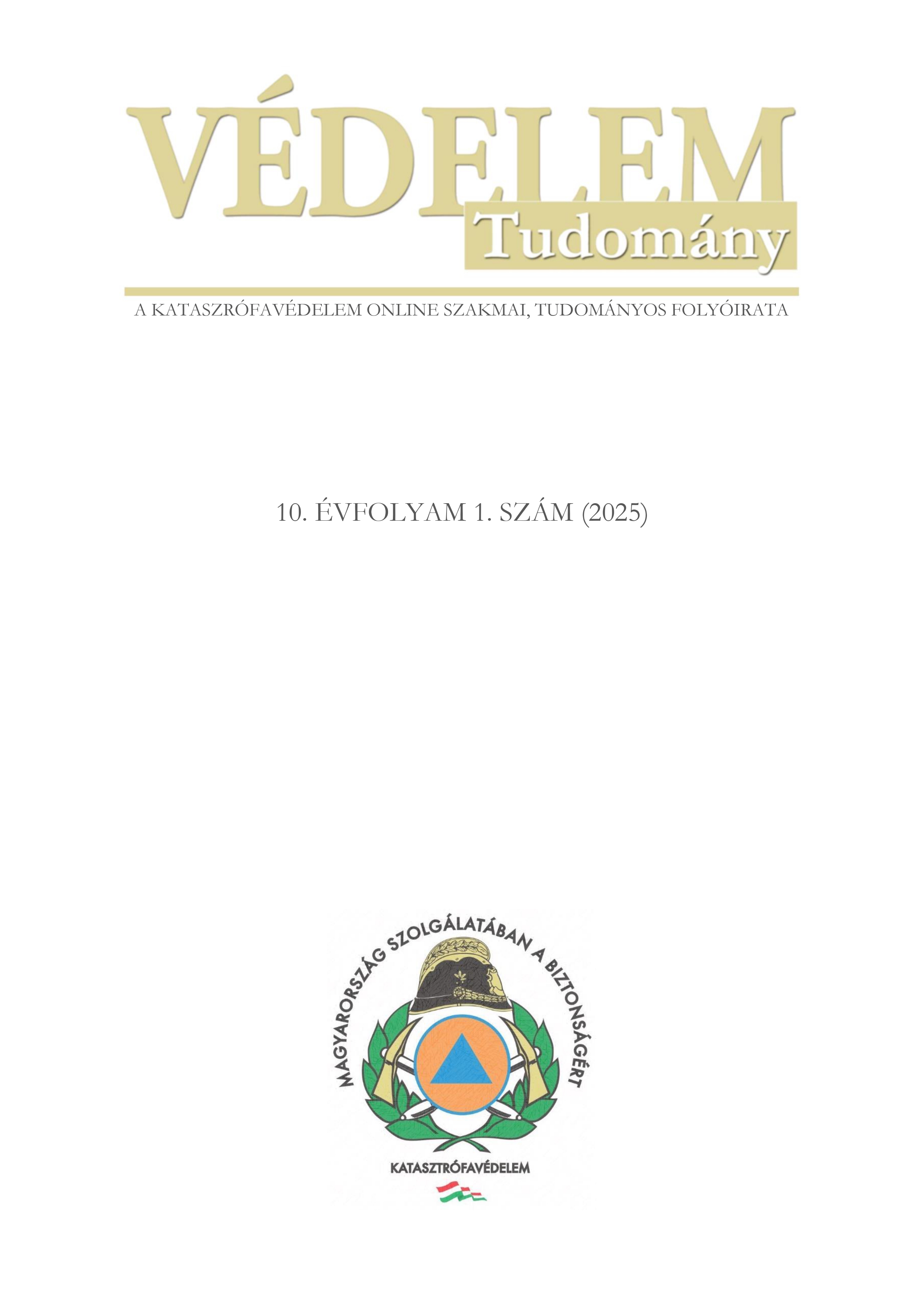Prediction of carbon monoxide leakage events
Abstract
In this research, we investigate the predictability of carbon monoxide poisoning incidents. By exploring the physical causes of carbon monoxide leaks due to faults in combustion equipment, hypotheses are made and subsequently proven through data-based analyses. We have used data from real carbon monoxide leaks and found that machine learning methods can be used to learn internal correlations in the data. Leakage events can be predicted by taking into account local meteorological forecasts. Using these results, we propose the deployment of an early warning system that can provide area-specific risk awareness in a map format that can be understood.
References
KAP, „Katasztrófavédelmi Adatszolgáltató Program,” Belügyminisztérium Országos Katasztrófavédelmi Főigazgatóság, 2024.
J. J. Rose, L. Wang, Q. Xu, F. C. McTiernan, S. Shiva, J. Tejero, T. M. Gladwin, „Carbon Monoxide Poisoning: Pathogenesis, Management, and Future Directions of Therapy.,” American journal of respiratory and critical care medicine, pp. 596–606, 2017. [Online]. Elérhetőség: https://pubmed.ncbi.nlm.nih.gov/27753502 (2025.03.16.)
BM OKF, „A szén-monoxid-mérgezés megelőzhető!” 2024. [Online]. Elérhetőség: https://katasztrofavedelem.hu/329/aszenmonoxidmergezesmegelozheto (2025.03.16.)
H. L. Ruan, W-S. Deng, Y. Wang, J-B. Chen, W-L. Hong, S-S. Ye, Z-J. Hu „Carbon monoxide poisoning: a prediction model using meteorological factors and air pollutant.,” BMC proceedings, 15(Suppl 1), 2021. [Online]. Elérhetőség: https://bmcproc.biomedcentral.com/articles/10.1186/s12919-021-00206-7 (2025.03.16.)
C-H. Wang, S-C. Shao, K-C. Chang, M-J. Hung, C-C. Yang, S-C. Liao „Quantifying the Effects of Climate Factors on Carbon Monoxide Poisoning: A Retrospective Study in Taiwan,” Frontiers in Public Health, 2021. [Online]. Elérhetőség: https://pubmed.ncbi.nlm.nih.gov/34722435/ (2025.03.16.)
Leikauf P., Tüzeléstechnikai elméleti ismeretek gyakorlati alkalmazása a kéményseprő-ipari tevékenységekben., 2021.
S. Sridharan, S. Mangalam „"Carbon monoxide risks and implications on maintenance-intensive fuel-burning appliances — A regulatory perspective,” Annual Reliability and Maintainability Symposium, 2017. [Online]. Elérhetőség: https://ieeexplore.ieee.org/document/7889726 (2025.03.16.)
R. Andrzejczyk, „Analysis of the Year-Round Operation of Enhanced Natural Ventilation Systems under Transient Weather Conditions in Europe.,” Energies, 2024. [Online]. Elérhetőség: https://www.mdpi.com/1996-1073/17/15/3795 (2025.03.16.)
Farkas J., Huszár T., Kocsis K., Leikauf T., Kéményseprő-ipari szakmai ismeret tansegédlet, Budapest: Katasztrófavédelmi Oktatási Központ, 2018. [Online]. Elérhetőség: https://bmkszf.hu (2025.03.18.)
G. V. Fracastoro &. M. Masoero, „Air Infiltration induced by Heating Appliances.” 1988. [Online]. Elérhetőség: https://www.aivc.org/sites/default/files/AIVC_1988_CP09_Vol1.pdf (2025.03.18.)
V. Leblanc &. M. A. A. Cox, „Interpretation of the point-biserial correlation coefficient in the context of a school examination.,” The Quantitative Methods for Psychology. 13., pp. 46-56., 2017. [Online]. Elérhetőség: https://www.tqmp.org/RegularArticles/vol13-1/p046/p046.pdf (2025.03.18.)
M. A. Nikitina. &. I. M. Chernuka, „Nonparametric statistics. Part 3. Correlation coefficients.,” Theory and practice of meat processing., 2023. [Online]. Elérhetőség: https://www.meatjournal.ru/jour/article/view/286article/view/286 (2025.03.18.)
L. Breiman, „Random Forests,” Machine Learning 45 ,, p. 5–32, 2001. [Online]. Elérhetőség: https://www.researchgate.net/publication/275342330_Random_Forests (2025.03.18.)
Z. He, D. Lin, T. Lau, M. Wu, „Gradient Boosting Machine: A Survey,” 2019. [Online]. Elérhetőség: https://arxiv.org/abs/1908.06951 (2025.03.18.)
T. Chen, C. Guestin, „XGBoost: A Scalable Tree Boosting System.,” In Proceedings of the 22nd ACM SIGKDD International Conference on Knowledge Discovery and Data Mining, p. pp. 785–794, 2016. ” [Online]. Elérhetőség: https://arxiv.org/abs/1603.02754 (2025.03.18.)
J. Schmidhuber, „Deep learning in neural networks: An overview.,” Neural Networks , 61, p. pp. 85–117., 2015. [Online]. Elérhetőség: https://www.sciencedirect.com/science/article/abs/pii/S0893608014002135
(2025.03.18.)
S. Lundberg, S-I. Lee, „A Unified Approach to Interpreting Model Predictions.,” Advances in Neural Information Processing Systems 30, pp. pp. 4765--4774, 2017. [Online]. Elérhetőség: https://arxiv.org/abs/1705.07874 (2025.03.18.)
M. C. Iban, O. Aksu, „SHAP-Driven Explainable Artificial Intelligence Framework for Wildfire Susceptibility Mapping Using MODIS Active Fire Pixels: An In-Depth Interpretation of Contributing Factors in Izmir,” Türkiye. Remote. Sens., 16, 2842., 2024. [Online]. Elérhetőség: https://www.mdpi.com/2072-4292/16/15/2842 (2025.03.18.)
Szinell Cs., Merza Á., „Meteorológiai alapismeretek,” 1999. [Online]. Available: [Online]. Elérhetőség: https://www.muszeroldal.hu/measurenotes/meteor.pdf (2025.03.20)
Copyright (c) 2025 Defence Science

This work is licensed under a Creative Commons Attribution-NonCommercial 4.0 International License.




